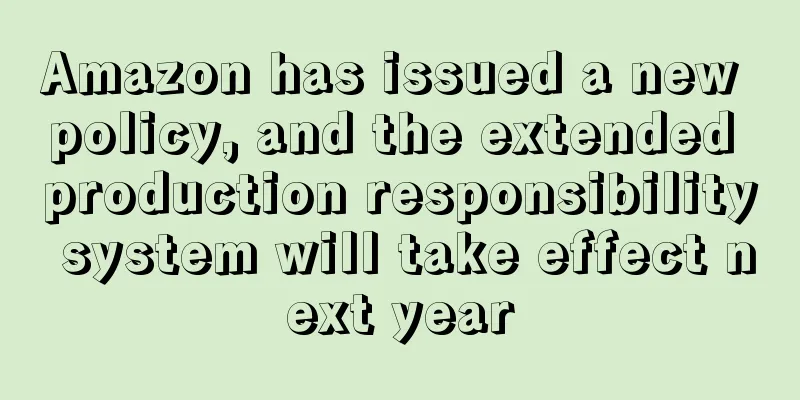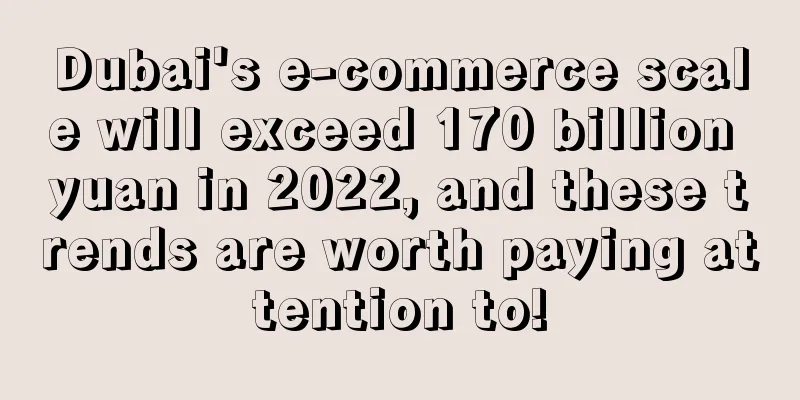Amazon has issued a new policy, and the extended production responsibility system will take effect next year

|
Recently, Amazon issued an announcement that it will implement the EPR policy next year . The EPR policy, namely Extended Producer's Responsibility, is an important environmental policy. The policy extends the producer's responsibility to the entire life cycle of its products, especially the recycling and reuse stage after product consumption.
That is to say, from 2020, the recycling of post-consumer waste will be managed through the Extended Producer Responsibility (EPR) system. According to Amazon's new policy, sellers must pay an "ecological contribution fee" to ensure that they fulfill their waste management responsibilities and obligations at the end of their product's service life.
In addition, Amazon emphasized that it will confirm whether the seller meets the requirements of the Extended Producer Responsibility (EPR) system in the country/region where the goods are sold . Therefore, Amazon will collect and verify the seller's EPR registration number. If the seller cannot prove to Amazon that it meets the requirements of EPR, Amazon will suspend the seller's non-compliant products published under the EPR product category.
According to policy requirements, sellers are required to provide the following information when registering for the Extended Producer Responsibility (EPR) : business license, store information, product information, product sales quantity, and a scanned copy of the VAT number.
The specific process of EPR registration is as follows : 1. According to the policy requirements of the Extended Producer Responsibility (EPR) system , products are divided into different categories. Amazon sellers need to clarify the product categories for EPR registration and then register with different recycling agencies.
2. Sellers need to calculate the specific recycling volume to be declared. Recycling volume = the number of products sold by the store under the EPR category in that year / weight
3. Provide EPR information and logos to consumers , and sellers need to affix relevant information or marks on the products. There are three common logos: print the trash can logo on the electronic and electrical products and packaging sold, print the recycling registration number on the sales invoice, and mark the French packaging recycling company logo on the packaging box.
4. Submit the registration letter and registration number to the Amazon platform. After the seller receives the registration letter and registration number for each EPR product category, submit it to Amazon backend for review. Amazon New Deal EPR |
<<: India's holiday sales exceeded $2.7 billion in four days! Smartphones are the best-selling
>>: Etsy Announcement: Sellers can set different prices for their products
Recommend
eBay is cracking down on products with false advertising related to the epidemic, and a large number of listings have been removed from the shelves!
According to foreign media The Sun, a large numbe...
What is EomafMall? EomafMall Review, Features
EomafMall is a leading international online store ...
What is Zhanhong Supply Chain Logistics & Zhanhong Supply Chain Logistics Review
Yiwu Zhanhong Supply Chain Management Co., Ltd. i...
What is holbilink? holbilink Review, Features
<span data-docs-delta="[[20,{"gallery"...
What is Sendo? Sendo Review, Features
Sendo is one of the earliest e-commerce companies...
After being acquired by Amazon, many sellers received calls from investors!
In the second half of the year, Amazon's bran...
Alibaba International Station promotes high-quality growth in foreign trade, with overall revenue growth reaching 29%
In the third quarter of Alibaba Group's fisca...
What is Shangma ERP? Shangma ERP Review, Features
Shangma ERP is a professional SaaS service provide...
What is Afterbuy? Afterbuy Review, Features
<span data-docs-delta="[[20,{"gallery"...
What is Peak Labs? Peak Labs Review, Features
Peak Labs is a mobile ordering, payment and custo...
To become an excellent Amazon operator, which is more important, luck or strength?
Whether it is a company's internal assessment...
Rooted in the real economy, witnessing the vitality of consumption, Tmall Double 11 is stable and improving
At midnight on November 12, the 14th Tmall Double...
What is Fulfillment by Amazon Donations? Fulfillment by Amazon Donations Review, Features
In August 2019, Amazon announced that it would lau...
What is Creative Software? Creative Software Review, Features
Chuangxiang Software is a comprehensive software t...
What is Value-Added Services? Value-Added Services Review, Features
In the United States, express delivery companies ...









